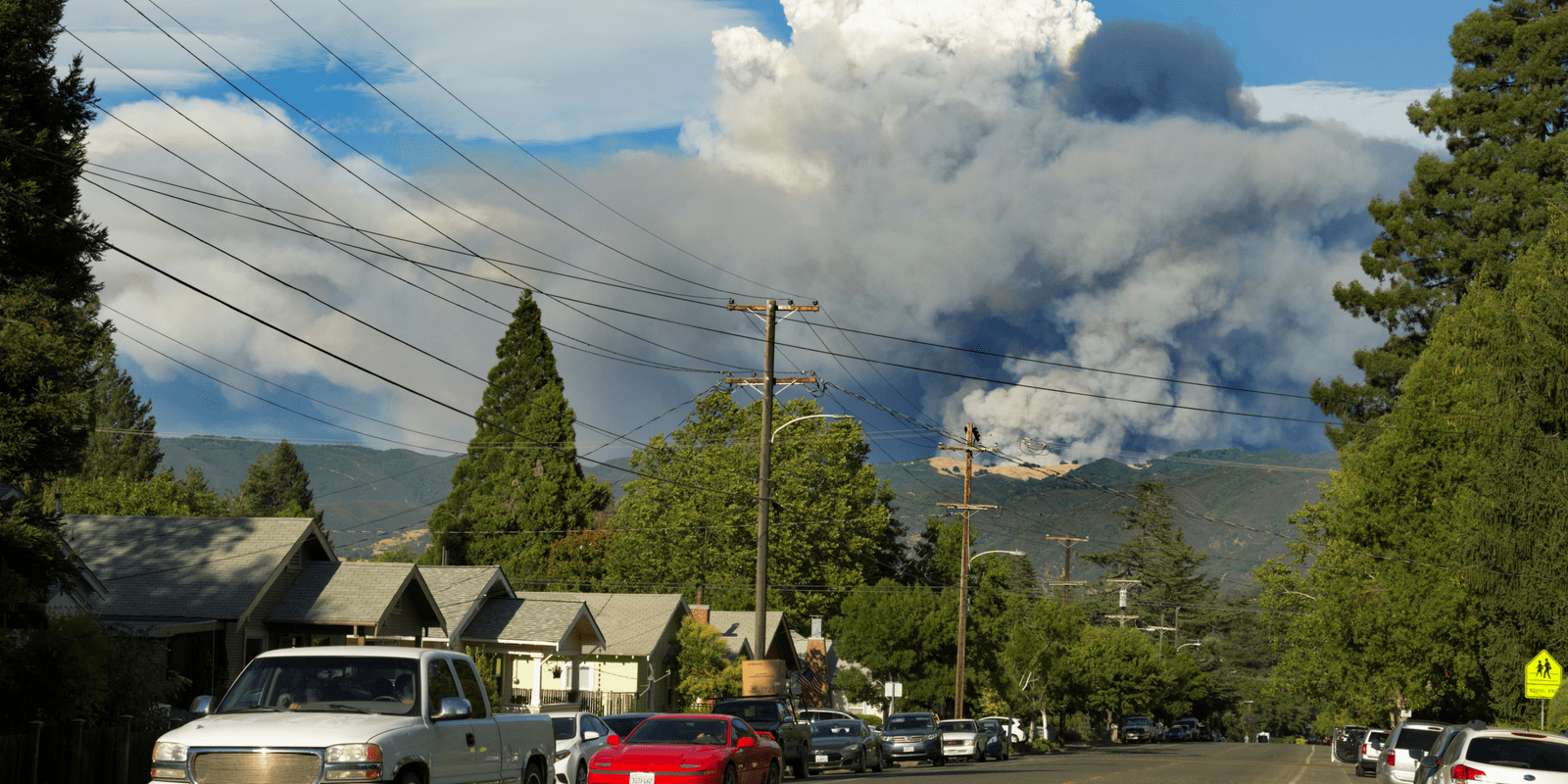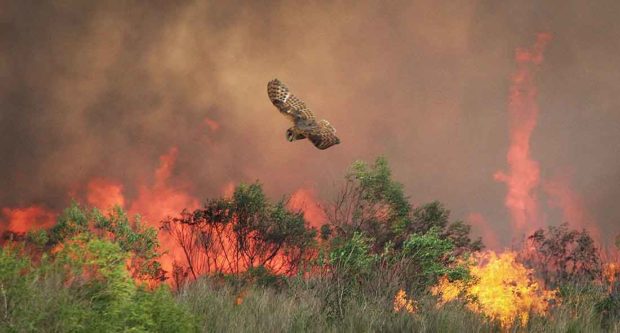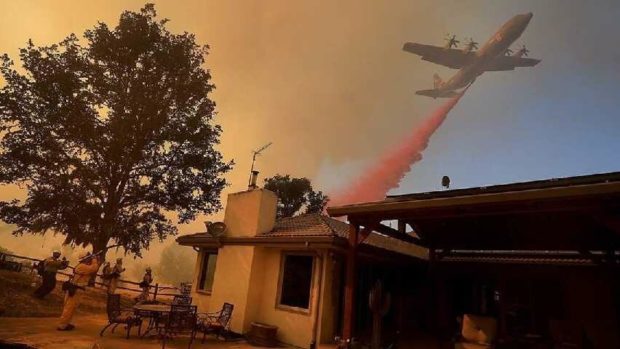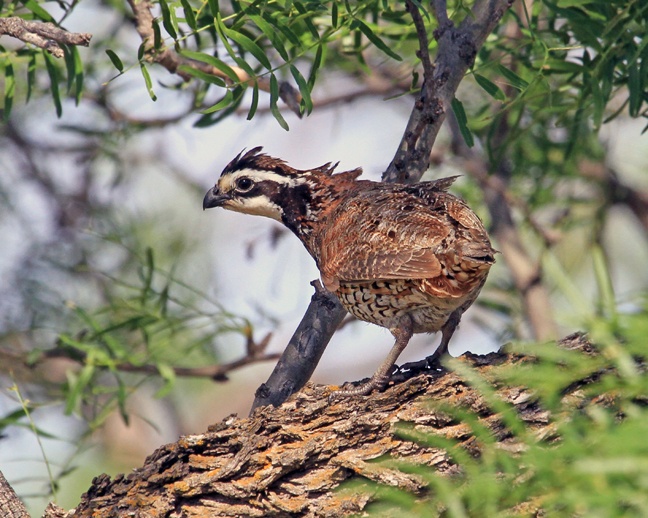We have much more to do and your continued support is needed now more than ever.
California Fires a Searing Image of Our Megafires Era

With so many intense fires currently burning across the western United States, it’s hard to convey to those outside the region just how bad it is for firefighters, communities and wildlife. Here are the big numbers: There are 103 large fires burning more than 1.5 million acres across 14 states, according to the National Interagency Fire Center. In 2018 to date, more than 5.3 million acres have burned.
Let’s take a look at how communities and wildlife are being impacted, and what we can do to prevent and manage future megafires, which burn 100,000 acres or more.
California Infernos
The Golden State is at the epicenter of the current fire season:
The Mendocino Complex fire, which became the largest wildfire in California history on Monday night, had burned more than 290,000 acres as of Tuesday morning, officials said. The sprawling blaze, which is actually a combination of the Ranch and River fires in Lake County, has frustrated firefighters as it continues to leap natural and man-made barriers. … Prolonged drought and extreme heat have made California ripe for dangerous fire conditions in recent months and years. Of the five largest wildfires in state history, four have occurred since 2012.
Those records are hard to comprehend. If all that wasn’t enough, the Carr fire in Northern California that destroyed more than 1,000 homes also continues to grow, with 167,113 acres burned so far. And down in Orange County, firefighters are battling a 4,000-acre brush fire in the Cleveland National Forest.
Beth Pratt, NWF’s Regional Executive Director for California, lives outside Yosemite National Park and has experienced two major fires the last two years. “Last year the Detwiler Fire scorched through our community and destroyed 63 homes—we had to evacuate but our home was luckily spared. This summer, fire struck again in our community, with the Ferguson Fire. Sadly, it’s becoming the new normal here in California with climate change and drought.”

Harm to Wildlife
While natural wildfires can have some beneficial effects on ecosystems, megafires threaten to destroy huge swaths of habitat. Birds and adult animals can often flee the flames, they can’t take their nests or dens with them.
The National Wildlife Federation’s Lauren Anderson has detailed how all fires aren’t the same – these hotter, more intense burns can be much more devastating to fish and wildlife:
Fire that burns through built-up dead vegetation, caused in part by overly aggressive fire suppression practices, can burn so hot that it damages the root systems that hold soil in place. This can increase the risk of erosion and runoff when rains return. The runoff and associated mudslides can damage the streams, rivers, and lakes that fish and other wildlife depend on. Severe megafires can also burn so hot that they destroy native seed banks, which makes it harder for native vegetation to regenerate following a fire. When native vegetation isn’t able to grow back it leaves habitat more vulnerable to invasive species.
Climate change is part of the problem. As the National Wildlife Federation detailed in our Megafires report last fall, global warming has pushed us into a new era of hotter, more intense, and more frequent fires. The eight worst fire seasons on record have all occurred in the past 15 years. The Washington Post’s Angela Fritz also reported recently that firefighters say fires are behaving differently than in the past, with unpredictable winds making them harder to fight.

Trump’s Tweets
President Trump issued a series of tweets in recent days, pointing fingers at forest management and policies that give some limited protections to the natural water flow fish depend on. As the Los Angeles Times’ Michael Hiltzik writes, the president’s criticisms are off-base:
The likeliest explanation for his take on water is that he’s confused by the demands for more irrigation water he’s hearing from Republican officeholders in the Central Valley. They’re the people who grouse about water being “wasted” by being diverted to the ocean, rather than into their fields.
Their demands have nothing to do with the availability of water for firefighting. Fire agencies haven’t been complaining about a lack of water, especially water “diverted” to the Pacific. Major reservoirs are near the worst fire zones; the Carr fire is near Lake Shasta and Whiskeytown Lake and the Mendocino Complex fire is near Clear Lake. All are at or near their historical levels.
Long-Term Solutions
Congress took a step forward earlier in 2018 when it included a firefighting funding fix in a forestry reform package, but much more is needed:
- We need federal legislation to cut climate-disrupting carbon pollution
- Congress should prioritize forest restoration, advance outcome-driven wildfire management practices, and encourage more responsible and fire-wise development in wildland areas
- Wildlife need dedicated investment in protecting and restoring habitat through the Recovering America’s Wildlife Act
We’ll be watching the fires out west. Follow National Wildlife Federation Action Fund on Facebook and Twitter to stay updated on how you can help protect wildlife from megafires and other extreme weather caused by climate change.






















